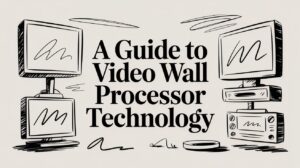
A Guide to Video Wall Processor Technology
So, what exactly is a video wall processor? Think of it as the brains of the operation for any large-scale, multi-screen setup. It’s the central
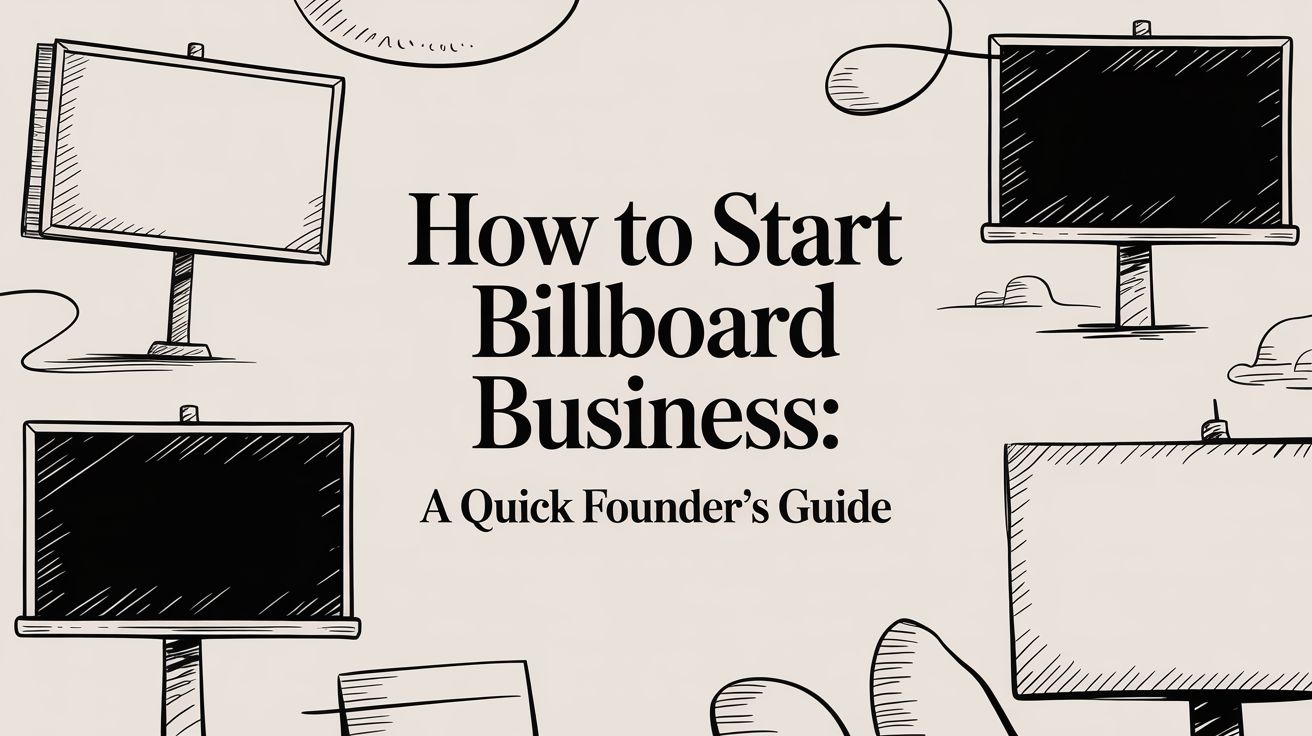
So, you're thinking about getting into the billboard business. Good call. It’s a classic for a reason. You're looking at a business that's all about securing prime, high-traffic real estate, cutting through the red tape of permits, picking the right hardware (static vs. digital), and then lining up a solid base of advertisers.
At its core, this is a game where your location and legal groundwork are every bit as important as the steel pole holding up your sign.
In a world where everyone is trying to block pop-ups and skip banner ads, a giant physical billboard is impossible to ignore. It’s a permanent fixture on our daily drives, giving advertisers a powerful, unskippable way to hammer home their message and build brand recognition. This isn't some dying medium; the billboard industry is actually seeing some serious growth, which just goes to show its staying power.
And we're not just talking about survival; this industry is booming. You’d be stepping into a global market that's already worth around $62.5 billion and is only expected to climb. Billboards are the undisputed heavyweight champion of out-of-home (OOH) advertising, pulling in nearly 65% of a global OOH ad spend that's on track to blow past $40 billion.
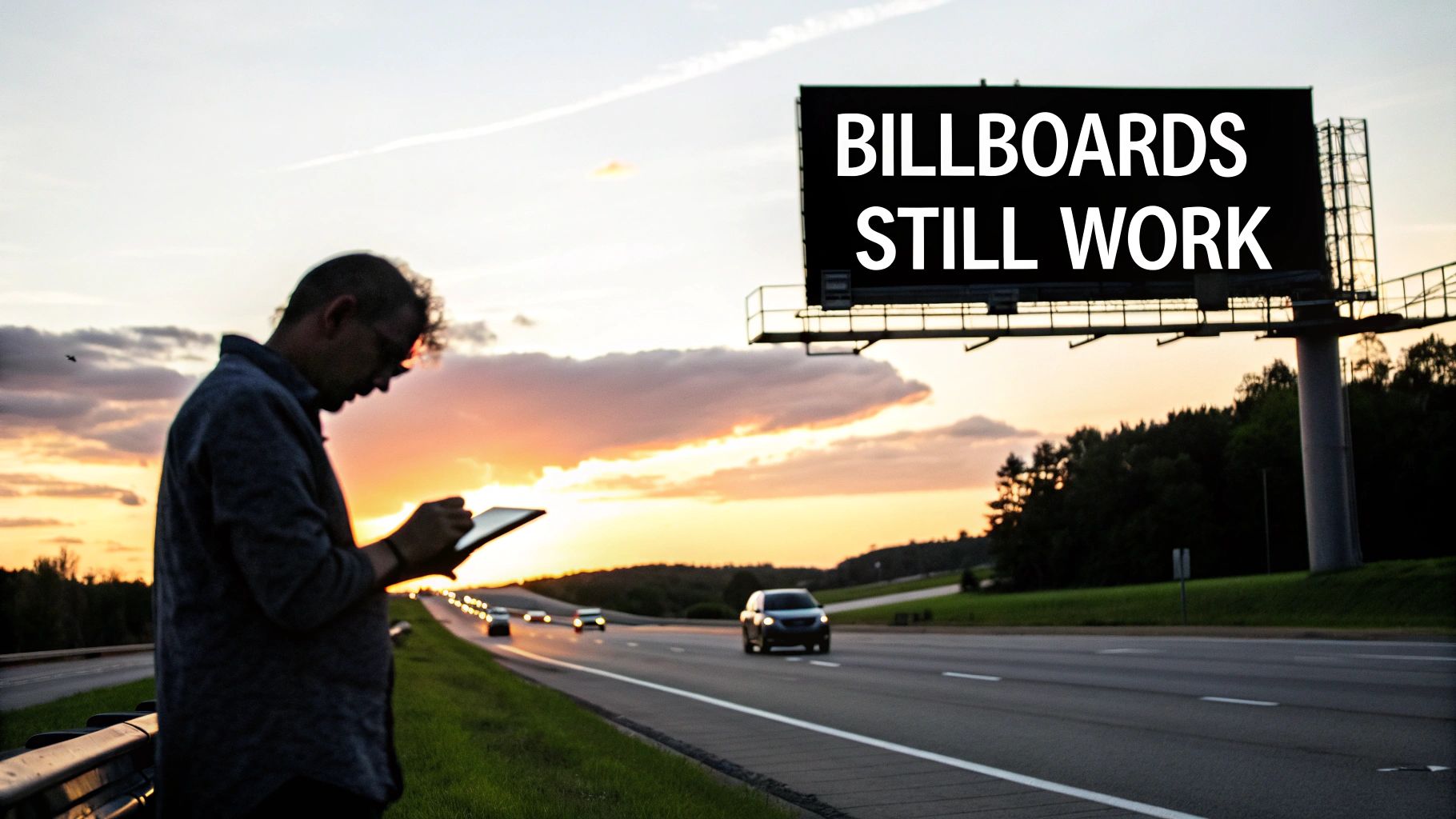
Why are billboards still so relevant? It really boils down to a few key advantages that digital channels just can't match.
Jumping into this business requires more than just a fat wallet; you need a solid game plan. Just like with any new venture, understanding the business landscape is step zero. For billboards, that means getting obsessive about traffic counts, untangling local zoning laws, and sizing up the competition before you even think about digging a hole.
One of the biggest mistakes I see newcomers make is lowballing the startup costs and not realizing how long it can take to turn a profit. A digital board is a cash cow—you can sell ad space to multiple clients at once—but the upfront cost is a beast. On the flip side, a well-placed static board can be a steady, reliable earner with much lower startup and maintenance headaches.
In the billboard game, that old real estate mantra—location, location, location—gets cranked up to eleven. Your business isn’t made when the first ad goes live; it's made the second you lock down a killer site and successfully run the gauntlet of legal approvals to build on it. This is the unglamorous, foundational work that separates a cash-flowing asset from a very expensive monument to bad planning.
The whole thing kicks off with a deep dive into data. You're not just looking for a busy road; you're hunting for the right kind of busy. High traffic counts are just the entry fee. The real money is in the details. Who’s in those cars? Are they locals on their daily commute, tourists burning cash on their way to an attraction, or commercial trucks on a key logistics route? Each of those audiences is gold to a different kind of advertiser.
Finding a prime location is an active hunt, not a passive search. Start by firing up traffic data tools and demographic maps to pinpoint arteries with a consistent, heavy flow of vehicles. But here's a pro tip: pay extra close attention to spots where traffic naturally slows or stops. Think major intersections, highway on-ramps, or the main drag leading into a retail mecca. These "choke points" massively increase the dwell time for your board, making it exponentially more valuable.
Once you’ve got a shortlist of promising corridors, it’s time to get out of the office and put boots on the ground. Drive these routes yourself, and do it at different times of the day. You need to see the traffic patterns with your own eyes and, most importantly, scout for unobstructed sightlines. A spot with a million cars a day is worthless if a clump of trees or a new high-rise is blocking the view.
Key Takeaway: Don't just count cars—analyze the entire journey. A billboard's value is a direct function of its visibility and the audience it commands. A location with slightly lower traffic but a long, clear approach can easily outperform a higher-traffic spot with a blocked view.
Okay, you've found a few potential honey holes. Now comes the most critical—and often, the most maddening—part of the process: getting the legal green light. This isn't just about dotting some i's and crossing some t's. It’s a full-blown expedition through a dense jungle of federal, state, and local laws.
The Highway Beautification Act (HBA) of 1965 sets the baseline rules for billboards along interstates and major highways. But the real street fight happens at the state and local levels. These are the codes that will dictate every last detail—the sign's size, its height, how it’s lit, and how far it has to be from… well, everything else.
You need to become a student of your target area's zoning map. Hunt for parcels zoned for commercial or industrial use, because that's usually the only ground where new billboard construction is even a possibility. Forget about residential or scenic areas; they're almost always off-limits. This regulatory friction is actually a good thing for established players, as it creates a huge barrier to entry and protects the value of legally permitted signs.
The U.S. outdoor advertising market was valued at around $7.35 billion in 2023 and is on track to hit $13.35 billion by 2030. That growth is happening in spite of these tight regulations, which keeps supply limited and demand high. You can dive deeper into the numbers by checking out the U.S. outdoor advertising market forecast on Grand View Research.
To really get a feel for the challenge, let's look at two totally different scenarios:
The Interstate Location: Out here, you're mostly dancing with the state Department of Transportation (DOT) and the HBA. The rules are often more cut-and-dry, focusing on things like spacing (e.g., must be 1,000 feet from the next sign on the same side), size limits, and confirming the land is zoned correctly. It’s a slow, methodical process, but it’s generally predictable.
The Downtown Commercial Zone: Welcome to a whole new ballgame. Here, you’re up against a city planning commission, a web of local ordinances, and maybe even a few feisty neighborhood associations. The city might have its own "aesthetic" rules, height restrictions to protect skyline views, or strict limits on digital sign brightness. Getting a permit here isn't just about filing paperwork; it’s about negotiation, community outreach, and knowing the local political landscape.
No matter where you build, the permitting process is meticulous and absolutely unforgiving. One tiny mistake on an application can set you back months and cost you thousands. Seriously consider hiring a local land-use attorney or a specialized permitting consultant. These folks know the codes, the clerks, and the commissioners. Their fee isn't an expense; it's an investment in getting your project off the ground.
Getting a site from "potential" to "permit-in-hand" is a multi-step journey. You have to be organized and methodical to avoid costly delays or, worse, a flat-out denial.
Here’s a checklist to keep you on track as you navigate the site acquisition and permitting process.
| Phase | Key Action | Critical Consideration |
|---|---|---|
| 1. Research & Discovery | Identify high-traffic corridors using DOT data and demographic tools. | Look for traffic "choke points" where dwell time is high (intersections, off-ramps). |
| Drive the routes to scout for clear, unobstructed sightlines. | A long, clear view is more valuable than raw traffic numbers. | |
| 2. Landowner Outreach | Identify property owners of potential parcels. | Approach them professionally with a clear proposal. Be ready to negotiate lease terms. |
| Execute a signed lease agreement contingent on permit approval. | Never finalize a lease without a permit-contingency clause. This is your escape hatch. | |
| 3. Zoning Verification | Pull the local zoning map and verify the parcel is zoned correctly. | Confirm commercial or industrial zoning. Don't assume anything. |
| Review local ordinances for specific billboard regulations (size, height, spacing). | Every municipality is different. Know their specific rules inside and out. | |
| 4. Permit Application | Hire a land-use attorney or permitting consultant if needed. | Their local expertise can save you months of headaches and thousands of dollars. |
| Prepare and submit all required applications to the city/county and/or state DOT. | Double- and triple-check every form for accuracy. A single error can cause major delays. | |
| 5. Approval & Finalization | Attend any required public hearings or planning commission meetings. | Be prepared to present your case and answer questions from officials and the public. |
| Receive final permit approval. | Once the permit is in hand, you can finalize the lease and move on to construction. |
This checklist isn’t just a to-do list; it’s your roadmap. Following these steps methodically is the surest way to turn a promising dot on a map into a revenue-generating billboard.
Alright, you’ve legally secured a prime location. Now comes the decision that will define your entire business: what kind of billboard are you going to build?
This isn't just a simple choice between a classic static board and a modern digital screen. You're choosing a business model. This one decision will dictate your initial investment, day-to-day operations, revenue potential, and even the type of clients you'll attract. It’s the foundation you'll build everything on.
Static billboards are the tried-and-true workhorses of the outdoor advertising world. We're talking about a single, printed vinyl ad that stays up for a month or longer. Their biggest selling point? Simplicity and a much lower barrier to entry.
The upfront cost to erect a static structure is dramatically less than its digital cousin. You're working with steel, lighting, and a pretty straightforward installation. You completely sidestep the hefty price tag of sophisticated LED panels and their complex electronics, making it a much more realistic starting point if you're working with limited capital.
Operationally, they're a breeze. Maintenance is mostly about making sure the structure is sound and the lights are on. Every so often, you'll have a crew swap out the vinyl for a new client. This predictability means lower ongoing costs and way fewer technical headaches.
So, who advertises on these? Businesses focused on long-term brand awareness and directional messaging love them. Think of the local restaurant that needs its "Exit Now" sign seen 24/7 or a law firm trying to become a household name in the neighborhood. They're paying for that constant, uninterrupted presence.
This infographic breaks down some of the key hurdles you'll face, regardless of the type of billboard you choose.
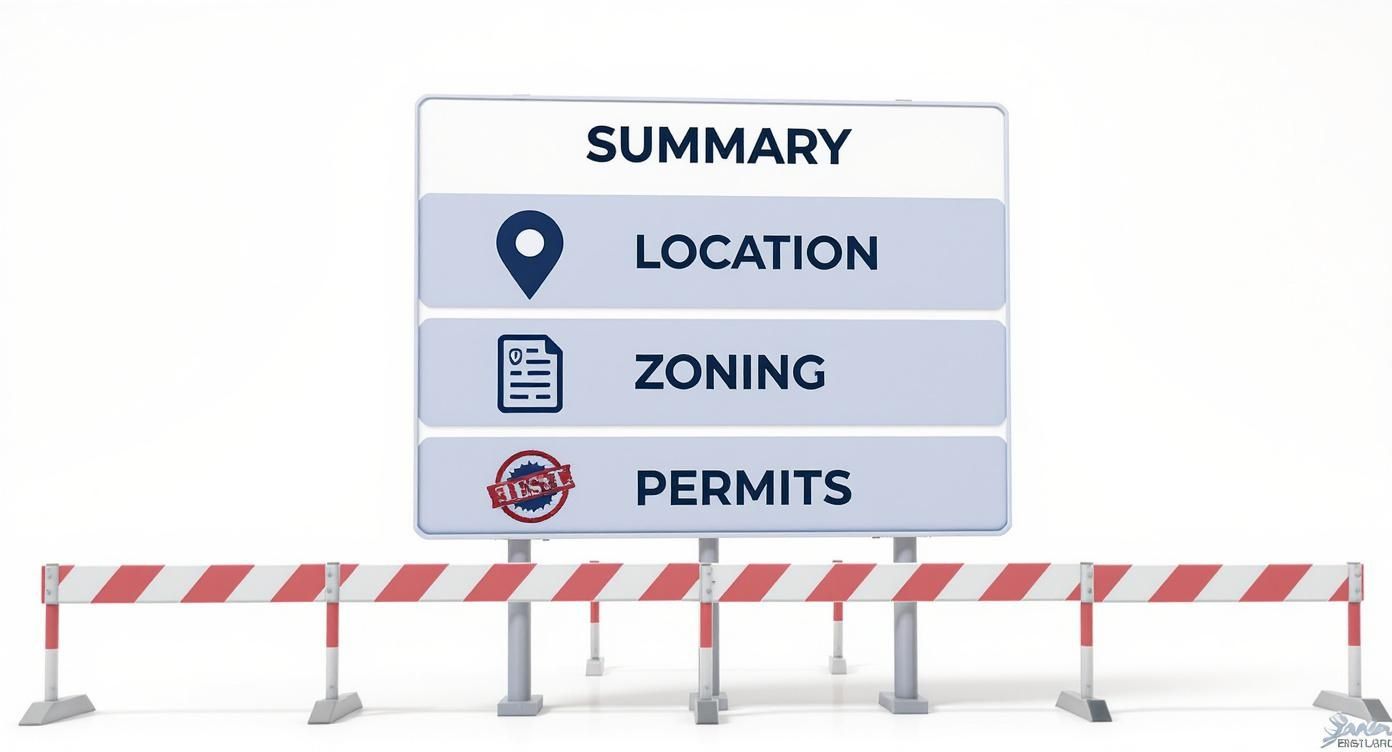
As you can see, locking down the right spot and navigating the maze of zoning and permits are challenges everyone in this business deals with, no matter what technology you're using.
Digital billboards, with their brilliant LED screens, are a quantum leap forward. Instead of one static ad, a digital face can run a rotating loop of ads, typically showing 6 to 8 different advertisers for about 8 seconds each.
This completely changes the revenue game. You're selling the same physical space to multiple clients at the same time, which can multiply your income from a single location. An empty ad slot isn't a month-long problem—it can be filled instantly without the cost and labor of printing and installing a new vinyl.
The real power of digital lies in its flexibility. Advertisers can run campaigns with dynamic content, changing their message based on the time of day, weather, or even live event outcomes. This opens the door to premium pricing and attracts a wider range of clients who need timely, relevant messaging.
Of course, this potential comes at a steep price. The initial investment for a digital billboard can be three to five times that of a static one, putting it out of reach for many newcomers. On top of that, you have to budget for higher electricity bills and the need for specialized technicians to keep those LED panels in perfect working order. You can learn more about the specifics of high-quality digital outdoor signage to really understand the tech involved.
Your choice isn't just about comparing costs; it's about matching the billboard to your business strategy and the reality of your market. A static board in a great location can be a highly profitable, low-maintenance asset. It's a fantastic way to get into the game, build cash flow, and learn the industry without taking on huge debt or operational complexity.
On the other hand, a digital billboard is a high-stakes, high-reward play. It requires more capital upfront and a more aggressive sales team to keep all those ad slots full. But in a prime, high-traffic spot, its revenue potential can absolutely dwarf that of a static board, offering a much faster return on investment if you manage it well.
To help you see the trade-offs side-by-side, let's break down the two business models.
Here’s a direct comparison of the financial and operational aspects to help you make an informed choice.
| Factor | Static Billboard | Digital (LED) Billboard |
|---|---|---|
| Initial Investment | Lower ($25k – $100k) | High ($100k – $300k+) |
| Revenue Model | One advertiser per face | Multiple advertisers per face (6-8) |
| Pricing Strategy | Flat monthly rate | Dynamic, per-spot, or CPM |
| Content Flexibility | Low (manual vinyl change) | High (instant digital updates) |
| Maintenance | Simple (structural, lighting) | Complex (technical, software) |
| Operating Costs | Lower (less power, simple upkeep) | Higher (electricity, tech support) |
| Ideal Advertiser | Long-term brand campaigns | Time-sensitive, dynamic campaigns |
Ultimately, take a hard look at your finances and the local market. If you have the capital and are in an area that can support premium ad rates, digital is an incredibly powerful path. If you're looking for a more conservative entry point, a well-placed static board is a proven and reliable way to build a successful billboard business.
Alright, you’ve wrestled through the paperwork, secured your location, and have the permits in hand. Now comes the exciting part—where your business plan leaves the page and starts taking shape in the real world of steel, concrete, and high-tech displays. This is the moment your vision becomes a physical landmark.
Getting this stage right comes down to picking the right partners and the best materials. This isn't just construction; it's building a long-term, revenue-generating asset that has to stand up to the elements for years.
The quality of your build starts with your suppliers. Whether you're going old-school with a static billboard or all-in on digital, you're primarily sourcing two key things: the steel structure and the advertising face itself. For the steel monopole, you need a fabricator who lives and breathes large-scale outdoor signage. This is not the place to cut corners for a few bucks.
When you're talking to steel fabricators, get into the weeds. Don't just ask for a quote. Ask about the grade of steel they use, their welding certifications, and the engineering specs behind their designs. You absolutely need to know if their structures are engineered to handle the specific wind loads in your region. A cheap pole that folds in the first major storm is a business-ending mistake.
If you’re going the digital route, choosing your LED screen supplier is just as crucial. The market is flooded with options, and honestly, not all LED panels are created equal. Your digital screen is the engine of your revenue, and its reliability is everything.
To nail down a solid manufacturer, drill down on these areas:
A long warranty is nice, but responsive tech support is gold. An idle screen is a money pit, losing you revenue every minute it’s down. A supplier who can troubleshoot quickly and overnight a part is far more valuable than one with a lengthy but bureaucratic warranty process.
With your steel and screens on order, it's time to manage the physical build. This is a complex job for licensed and insured pros who specialize in this kind of heavy-duty construction. Your general contractor will be your quarterback, overseeing everything from digging the foundation to the final electrical hookup.
It all starts with the foundation. What you don't see is just as important as the towering pole. A massive, stable foundation is non-negotiable for safety and longevity. Your contractor will need soil tests to figure out the right depth and amount of rebar needed for the concrete base. For a deeper dive into what's involved, this practical guide to steel building foundation requirements is a great resource.
Once the foundation is cured, the real show begins. It’s a carefully coordinated process:
Your billboard is up, shining bright, but your job isn't done. Think of it like a car—it needs regular tune-ups to keep running smoothly. A proactive maintenance plan is essential to protect your investment and keep the ad revenue flowing. Ignoring it is just asking for expensive, emergency repairs and creating a serious safety hazard.
Your plan should include routine checks. Look for any signs of rust or stress on the structure, inspect the electrical connections, and make sure all the lights are working. For digital boards, you'll also need to clean the screen and keep an eye out for any dead pixels or glitchy modules.
Putting together a simple maintenance checklist and schedule from day one will keep your asset in prime condition, delivering maximum value for you and your advertisers for decades to come.
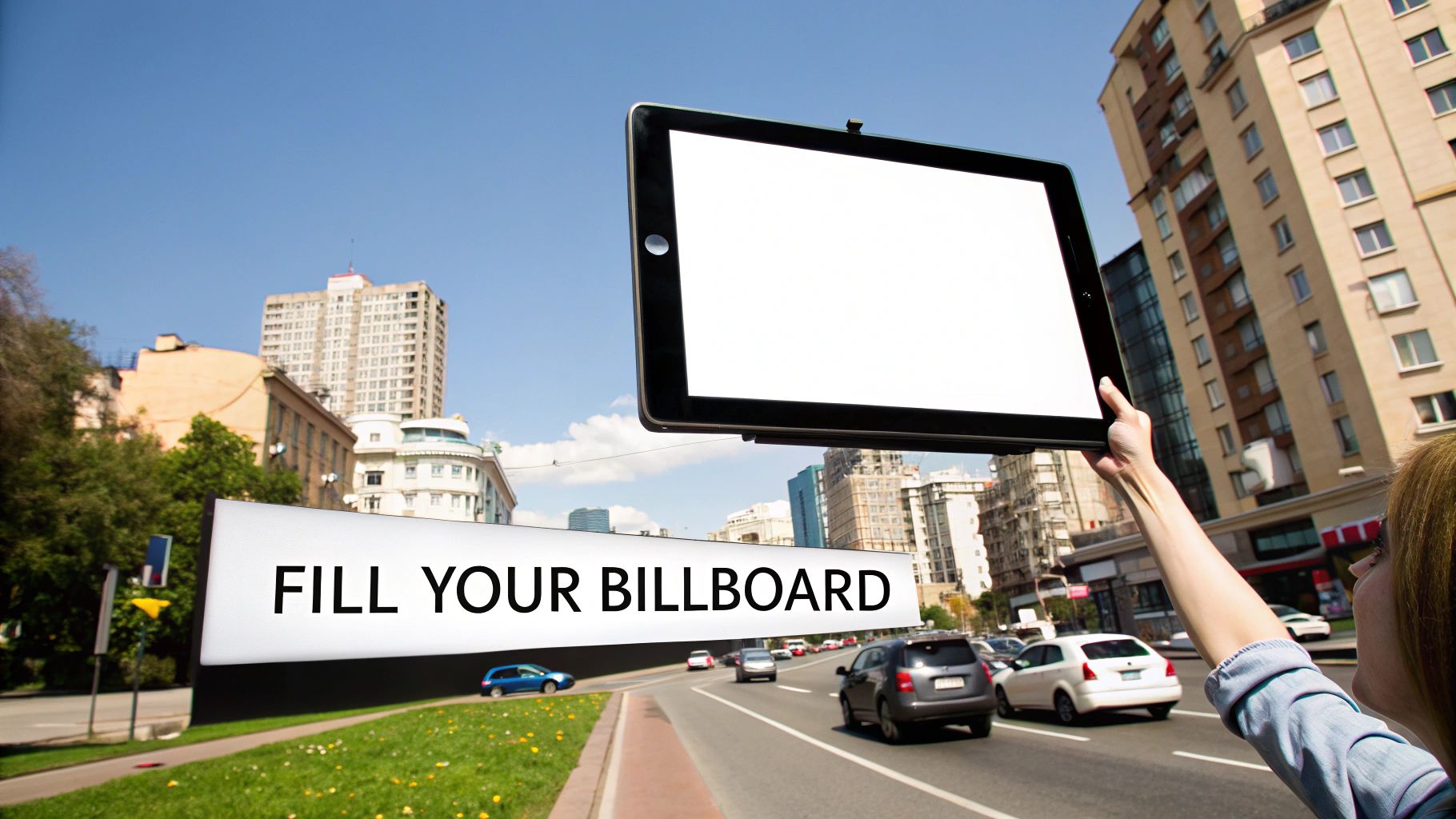
Your billboard is built, the lights are on, and the permits are framed. Congratulations. You now own a very expensive piece of art.
But an empty billboard doesn't pay the bills. Turning that steel structure into a consistent revenue engine is where the real work begins. This is all about mastering both the art of pricing and the science of sales.
Pricing isn't about pulling a number out of thin air. It’s a strategic calculation based on hard data and what the market will bear. The goal is to create a compelling offer that delivers obvious value to advertisers while maximizing your return on a pretty significant investment. How you price your space will depend entirely on whether your board is static or digital.
For a classic static billboard, the model is beautifully simple. You're typically charging a flat monthly rate for exclusive use of that ad space. This rate is your "face value," and it's built on a few key factors.
Digital billboards, on the other hand, play a completely different game. Instead of one client per month, you’re selling spots in a rotating loop—typically 6-8 slots of 8 seconds each. This model opens up far more dynamic and lucrative pricing strategies.
You can still offer a flat rate for one of those slots, but many savvy operators use a Cost Per Mille (CPM), or cost per thousand impressions, model. This is a language digital marketers already understand, allowing them to buy a certain number of views with greater flexibility. Plus, the ability to change ad creative instantly means you can charge a premium for time-sensitive campaigns, like a weekend concert or a flash sale.
Pro Tip: Don't just sell space; sell solutions. A new restaurant doesn't want to rent a billboard—they want more customers walking through their door. Frame your pricing around the outcome they're after, showing them exactly how your location's traffic will help them hit their goals.
With your pricing dialed in, it's time to hit the pavement and build your sales pipeline. In the beginning, your best prospects are often right in your billboard's backyard. Your first clients will almost certainly be local and regional businesses who immediately see the value in reaching people in their own community.
Start by scouting the area. Seriously, drive the main roads leading to and from your billboard and make a list of every potential advertiser you see. Look for businesses that rely heavily on local traffic and brand recognition.
Your initial target list should include:
Once you have your list, it's time for outreach. Please, don't just send a cold email with a price list attached. Do your homework. Understand their business, figure out who their target customer is, and be prepared to explain exactly how your billboard can connect them to that audience.
A professional media kit is your single most important sales tool. It’s a visual, data-driven presentation that tells the story of your billboard's value. It needs to be clean, professional, and dead simple to understand.
Your media kit absolutely must include:
When you finally get a meeting, your pitch should be less about your sign and more about the advertiser's success. Focus on the tangible Return on Investment (ROI) you can deliver. For example, instead of just saying, "This spot gets 50,000 views a day," try this: "We can put your message in front of 50,000 potential customers every single day, and most of them live and work within a 10-mile radius of your store."
Building your sales machine is an ongoing process. You'll constantly be refining your pricing, hunting for new prospects, and perfecting your pitch. An empty billboard is a liability, but a fully-booked one is the foundation of a thriving business.
Jumping into the billboard business feels a bit like putting together a massive puzzle. You get the big pieces in place—location, construction, sales—and suddenly, a dozen smaller, trickier questions pop up. These are the practical, on-the-ground uncertainties that can really slow you down if you're not prepared.
Let's clear the air and tackle some of the most common questions I hear from new billboard owners to help you move forward with confidence.
There's no single magic number here—the initial investment can swing wildly. For a classic static billboard, you're typically looking at anywhere from $25,000 to $100,000 just for construction and installation. The final bill really depends on the size and complexity of the structure.
But if you're going digital, get ready for a much bigger price tag. A brand-new digital LED billboard can easily run from $100,000 to well over $300,000. And remember, those figures don't even touch on the other crucial costs: buying or leasing the land, paying for permits and legal fees, or having enough cash on hand to keep the lights on until the ad revenue starts rolling in. You absolutely have to build a detailed budget that covers every single one-time and recurring expense before you even think about chasing down funding.
Hands down, the most common and costly mistake is underestimating the legal and regulatory maze. It’s easy to get caught up in the exciting parts, like picturing that huge steel structure and counting potential ad dollars, but a lot of newcomers completely gloss over the deep due diligence needed for zoning laws and permits.
This isn't a small slip-up; it's a business-ending error. Pushing forward without the proper approvals can lead to staggering fines, a court order to tear down your entire structure, and a total loss of your investment.
The cardinal rule in this business is dead simple: Always secure every necessary permit and legal approval before a single dollar is spent on a land lease or construction. There are no shortcuts. Assuming you can ask for forgiveness later is a gamble you just can't afford to take.
Your first clients are almost always hiding in plain sight. Think local. The businesses that will see the most immediate value in your sign are the ones right in its backyard.
Hop in your car and drive the main routes leading to and from your billboard location. Take note of every business that relies on local traffic and visibility to survive.
Put together a simple but professional media kit with great photos of your location, key traffic counts, and some attractive introductory pricing. Then, start making connections—visit these businesses in person or reach out to their marketing managers. Offering a discounted "founder's rate" for your first few advertisers is a proven way to build a client portfolio and start gathering powerful testimonials.
While a digital billboard comes with a much heavier upfront investment, its long-term profit potential is generally higher. The math is straightforward: you can sell ad space to multiple advertisers (usually 6-8 spots in a rotating loop) on the exact same sign face. You're effectively multiplying your revenue from a single location.
Digital boards also unlock the door to more dynamic, programmatic advertising, which often fetches premium rates from savvy ad buyers. However, its profitability is completely tied to having a prime, high-traffic location and a killer sales effort to keep all those ad slots filled. A static board in a fantastic spot can still be incredibly profitable with far less operational headache and financial risk. For a deeper dive into the tech, you can find more answers in this comprehensive FAQ for LED signs.
Ready to turn your vision into a landmark? At Smart LED Inc., we provide factory-direct digital billboards that deliver unmatched performance and durability, helping you maximize your revenue from day one. Explore our outdoor LED sign solutions today

So, what exactly is a video wall processor? Think of it as the brains of the operation for any large-scale, multi-screen setup. It’s the central
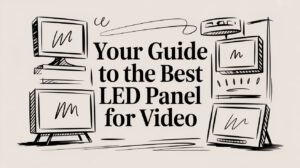
So, what exactly is a professional led panel for video? Think of it less like a traditional TV and more like a high-tech, luminous building
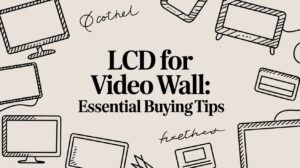
When you're looking for a massive, high-impact display, an LCD video wall is often the first technology that comes to mind. It's a proven workhorse,
"*" indicates required fields